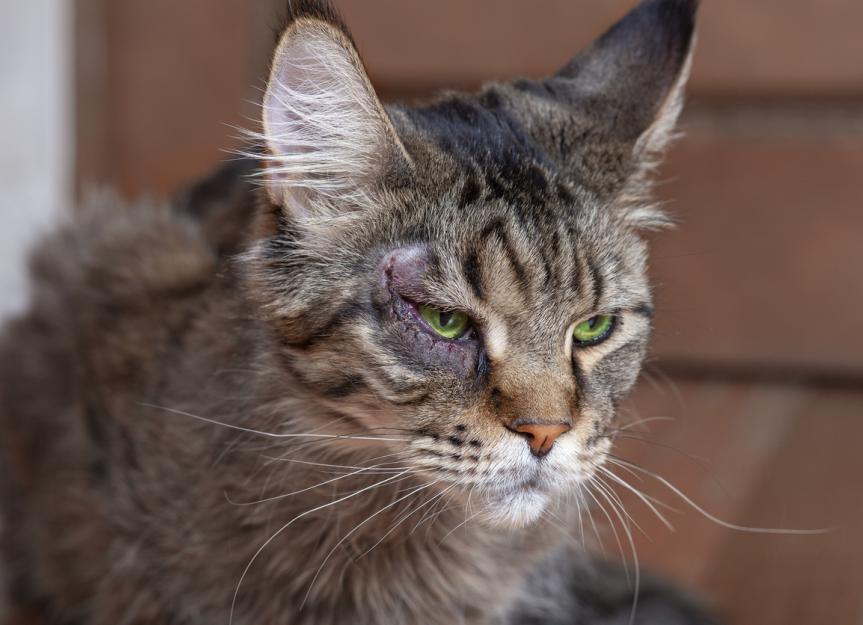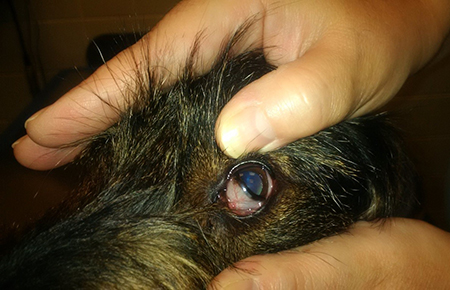Have you noticed your furry friend’s third eyelid showing in just one eye? This peculiar sight can be quite alarming for dog owners, but fear not, as we delve into the reasons behind this occurrence in our blog today. Dogs possess a nictitating membrane, commonly known as the third eyelid, that serves to protect their eyes. When this membrane becomes noticeable in one eye, it could indicate a variety of underlying issues such as eye infections, trauma, or even more serious health concerns. Understanding why your dog’s third eyelid is showing in one eye is crucial for providing the necessary care and attention to ensure your pet’s well-being.
Introduction to Dog Third Eyelid
When you notice your dog’s third eyelid showing in one eye, it can be a cause for concern. The third eyelid, also known as the nictitating membrane, is a protective barrier in dogs that helps keep their eyes moist and protected from debris. Seeing it in one eye may indicate various underlying issues that require attention.
Functions of the Dog Third Eyelid
The third eyelid plays a crucial role in maintaining your dog’s eye health by spreading tears and removing debris. It also helps protect the eyes from potential injuries and infections, acting as an additional layer of defense.
Reasons for Dog Third Eyelid Showing in One Eye
If you observe the third eyelid in only one eye of your dog, it could be due to issues such as conjunctivitis, eye trauma, foreign objects, or underlying health conditions. It is essential to consult a veterinarian to determine the exact cause and provide appropriate treatment.

Understanding the Anatomy of a Dog’s Eye
Dogs have a complex ocular structure that helps them in their everyday activities. The eye consists of various parts, including the cornea, iris, pupil, lens, retina, optic nerve, and the third eyelid. The third eyelid, also known as the nictitating membrane, is a transparent extra eyelid located in the inner corner of a dog’s eye.
Functions of the Third Eyelid
The primary function of the third eyelid is to protect the eye from debris, dust, and other foreign objects. It also helps in distributing tears across the cornea to keep the eye moist and protect it from infections. Additionally, it plays a role in regulating tear production.
Common Issues with the Third Eyelid
One common issue dog owners may notice is the third eyelid showing in one eye more than usual. This can be a sign of various underlying problems such as eye infections, inflammation, trauma, or even certain health conditions. It is essential to consult a veterinarian if this occurs.

Causes of Dog Third Eyelid Showing in One Eye
When a dog’s third eyelid is showing in one eye, it can indicate various underlying issues that may require attention. One common cause is conjunctivitis, an inflammation of the eye that may lead to the protrusion of the third eyelid. Additionally, eye trauma such as scratches or foreign objects can result in this condition.
Eye Infections
Dogs may develop eye infections due to bacteria, viruses, or allergies, leading to the third eyelid being more visible in one eye. It’s essential to address these infections promptly to prevent further complications.
Genetic Factors
In some cases, certain genetic factors may predispose certain breeds to have prominent third eyelids, especially in one eye. Breeds like Beagles and Bloodhounds are known to have more visible third eyelids due to their genetic makeup.
Symptoms to Look Out For
When you notice your dog’s third eyelid showing in one eye, it can be an indication of an underlying health issue. Some common symptoms to look out for include:
Redness or Irritation
Dogs with a visible third eyelid in one eye may also exhibit redness or irritation around the affected eye. This can be a sign of inflammation or infection.
You may notice your dog rubbing or scratching at the eye due to discomfort.
Decreased Tear Production
Another symptom to watch for is a decrease in tear production in the affected eye. This can lead to dryness and discomfort for your pet.
- Your dog may show signs of squinting or watery discharge from the eye.
- Excessive blinking or pawing at the eye could also indicate reduced tear production.
Diagnosis and Treatment Options
When you notice your dog’s third eyelid showing in one eye, it could indicate an underlying issue that requires prompt attention. To accurately diagnose the cause, a visit to the veterinarian is crucial.
Diagnosis Process
The vet will conduct a thorough eye examination to determine the underlying cause. This may involve using specialized equipment to get a closer look at the eye.
In some cases, additional tests such as tear production tests or eye pressure measurements may be required to pinpoint the issue.
Treatment Options
The treatment for a dog’s third eyelid showing in one eye will depend on the underlying cause. Possible treatments may include eye drops, ointments, or even surgical intervention if necessary.
- Medication prescribed by the vet
- Follow-up appointments to monitor progress
- Changes in diet or lifestyle if indicated
Preventive Measures for Eye Health in Dogs
Ensuring good eye health is crucial for your furry friend. Here are some preventive measures you can take to maintain your dog’s eye health:
Regular Eye Exams
Schedule regular eye check-ups with your veterinarian to detect any eye issues early on. Early detection can prevent serious problems.
Healthy Diet
Feed your dog a nutritious diet rich in vitamins and antioxidants to support eye health.
Include foods like carrots, blueberries, and leafy greens in their diet.
Clean Environment
Ensure your dog’s living space is clean and free from irritants that could harm their eyes.
- Regularly clean dust and debris that may cause eye irritation.
- Keep chemicals and sharp objects away from their reach.
Frequently Asked Questions
- What is a dog’s third eyelid?
- A dog’s third eyelid, also known as the nictitating membrane or haw, is a thin, transparent membrane located in the inner corner of their eyes.
- Why is a dog’s third eyelid sometimes visible in one eye?
- The visibility of a dog’s third eyelid in one eye can be a sign of irritation, injury, or an underlying health issue that needs to be examined by a veterinarian.
- Is it normal for a dog’s third eyelid to show in one eye?
- While it is common for a dog’s third eyelid to be present and occasionally visible, persistent visibility in one eye could indicate a problem that requires attention.
- What are some common reasons for a dog’s third eyelid to be showing in one eye?
- Common reasons for a dog’s third eyelid to become visible in one eye include eye infections, allergies, foreign objects in the eye, or more serious issues like glaucoma or cherry eye.
- How should I address my dog’s visible third eyelid in one eye?
- If you notice your dog’s third eyelid showing in one eye, it is recommended to visit a veterinarian for a proper diagnosis and treatment. Delay in addressing eye issues can lead to complications.
Final Thoughts
In conclusion, the sight of a dog’s third eyelid showing in one eye may be alarming, but it is usually a sign of an underlying issue that needs attention. Whether it is due to an injury, infection, or inflammation, prompt veterinary care is essential for proper diagnosis and treatment. Remember, the third eyelid serves an important protective function for your dog’s eyes, so any abnormalities should not be ignored. Regular check-ups and monitoring your pet’s eye health can help catch potential problems early. Always consult your veterinarian if you notice any changes in your dog’s eye appearance or behavior.



